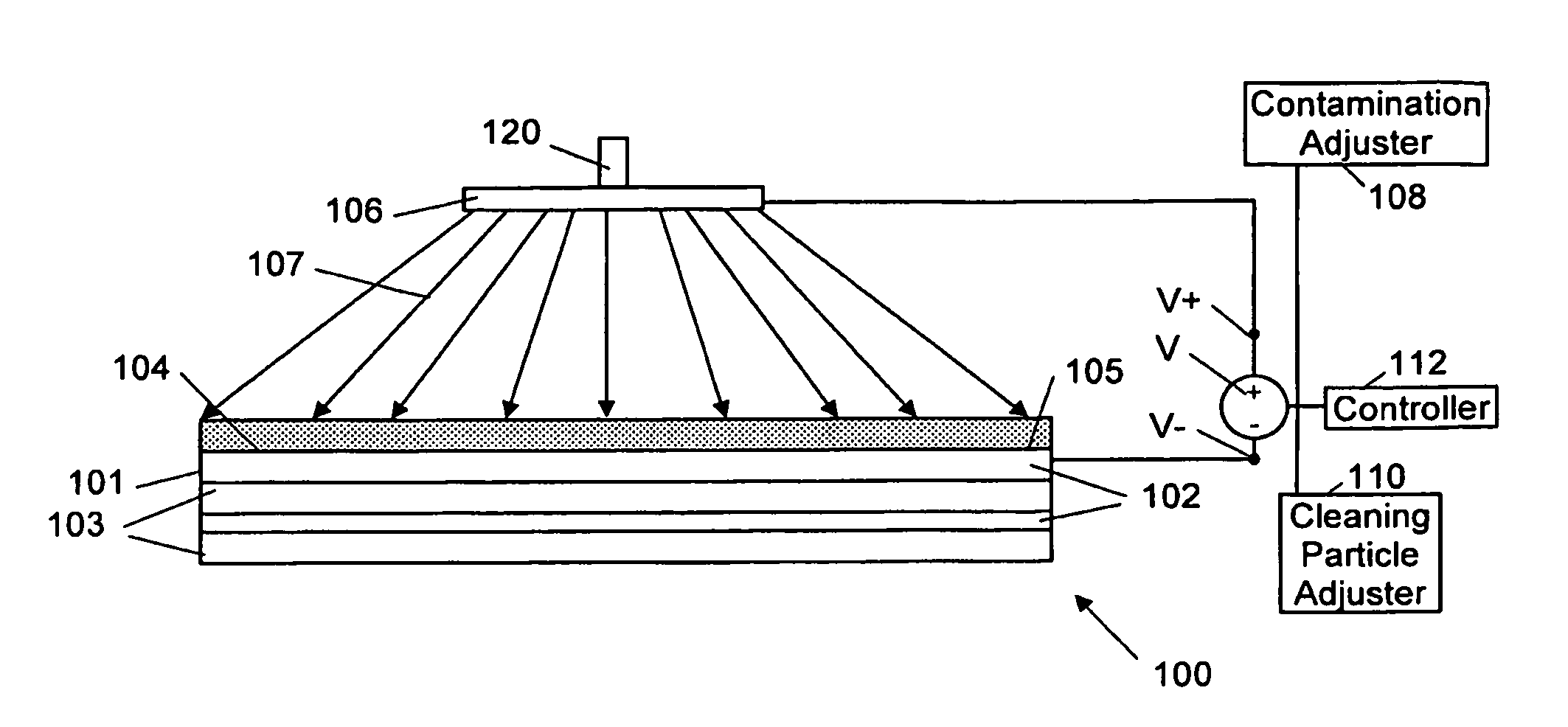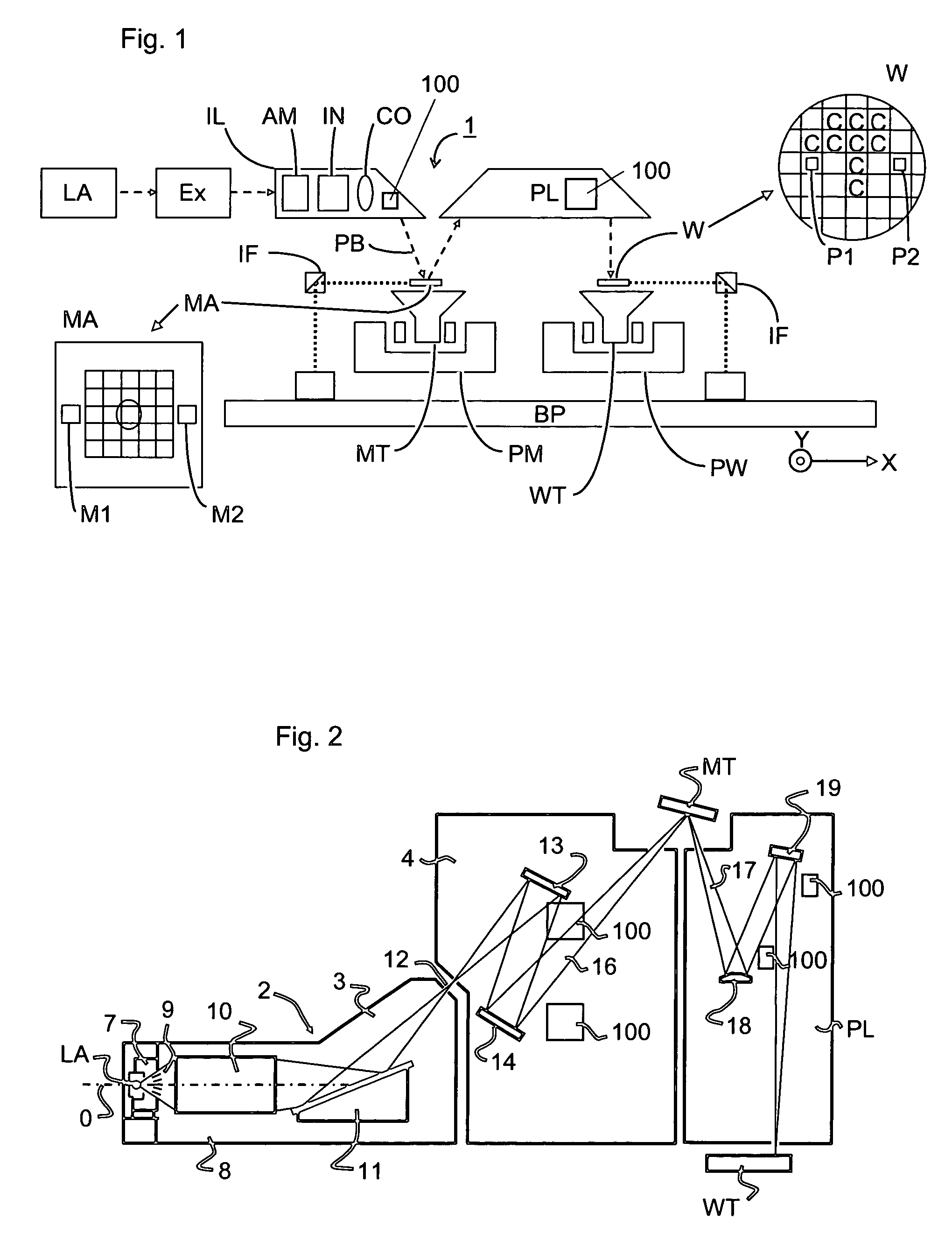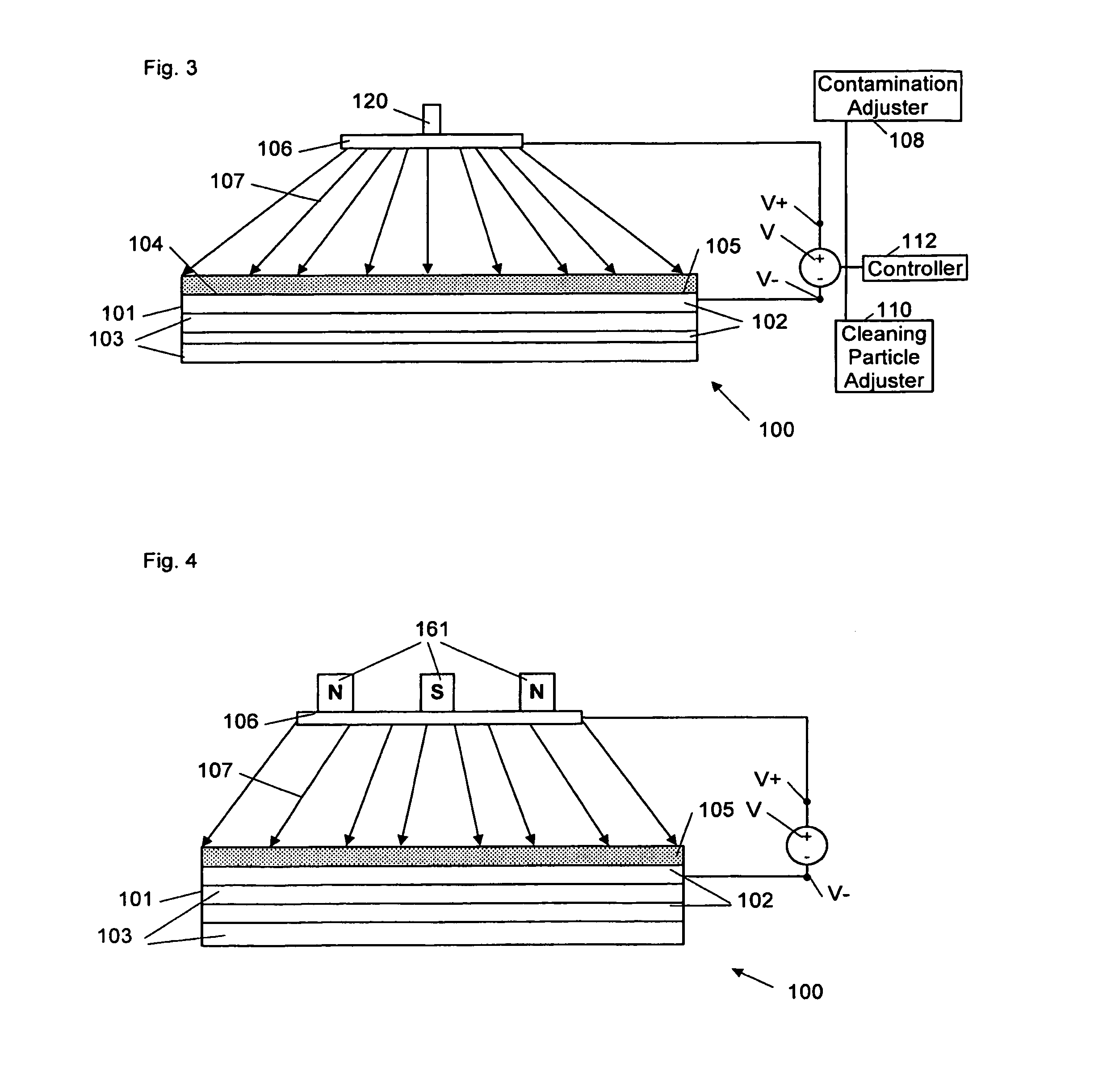Method for cleaning a surface of a component of a lithographic projection apparatus, lithographic projection apparatus, device manufacturing method and cleaning system
a technology cleaning system, which is applied in the direction of photomechanical apparatus, printing, instruments, etc., can solve the problems of contamination of adverse effects of lithographic projection apparatus performance, and contamination of optical components of lithographic projection apparatus, such as mirrors, to achieve better control of contamination removal
- Summary
- Abstract
- Description
- Claims
- Application Information
AI Technical Summary
Benefits of technology
Problems solved by technology
Method used
Image
Examples
example 1
[0083]Firing of the layer contaminated by contamination clusters with Ne-ions of an energy from about 0.5 keV to about 1.0 keV and a current in the micro-ampere range (dependent on the ion source) with an angle of incidence with respect to the surface from about 10° to about 30° during a time period of less than about 30 seconds, results in removal of the contamination clusters. The surface roughness of a rms-value of about 0.3 nm remains practically unchanged. If the upper layers are very thin and if these comprise of a metal, e.g. ruthenium, or a semiconductor, e.g. silicon, a negligibly small commingling of these layers can take place.
example 2
[0084]Specifically firing, with the aid of a scanning electron microscope, of the contamination clusters with about 10 keV electrons with a current in the nano-ampere range during a time period of less than about 60 seconds under an angle of about 85° to about 90° with respect to the surface, results in cracking of the contamination clusters. The remaining material residuals can subsequently be removed e.g. through a UV-ozone cleaning. Almost no commingling of the upper layers takes place. The surface roughness of a rms-value of about 0.25 nm remains unchanged.
example 3
[0085]Firing of the contamination clusters with about 1 keV Ar-ions and a current in the micro-ampere range with an angle of incidence with respect to the surface of less than about 30° during a time period of about 10 to about 20 seconds, results in a removal of the contamination clusters. Since the mass of argon is essentially higher than the mass of the materials in the contamination cluster, a slight commingling of the upper layers can take place, when the upper layers comprise metals, e.g. rhodium, or a non-metal, e.g. silicon nitride, and when these are very thin. The surface roughness again remains nearly uninfluenced.
PUM
 Login to View More
Login to View More Abstract
Description
Claims
Application Information
 Login to View More
Login to View More - R&D
- Intellectual Property
- Life Sciences
- Materials
- Tech Scout
- Unparalleled Data Quality
- Higher Quality Content
- 60% Fewer Hallucinations
Browse by: Latest US Patents, China's latest patents, Technical Efficacy Thesaurus, Application Domain, Technology Topic, Popular Technical Reports.
© 2025 PatSnap. All rights reserved.Legal|Privacy policy|Modern Slavery Act Transparency Statement|Sitemap|About US| Contact US: help@patsnap.com



